Post-Taëf Lebanese Governments “Sovereign Ministries” Exclusive for Zu'ama and Sects
Since November 5, 1989, the date of approval of the Lebanese National Accord Document (Taëf Accord) that put an end to the violent actions of the long-lasting civil war (since 1975), until Sunday December 18, 2016, the date of formation of the new Lebanese government election of General Michel Aoun as the new president, Lebanon has witnessed five presidential eras during which seventeen governments were formed with eight presidents and 446 ministers. Some ministries monopolized particular sects, parties, and ministers.
Post-Taëf Governments (1989-2016) and their Terms.
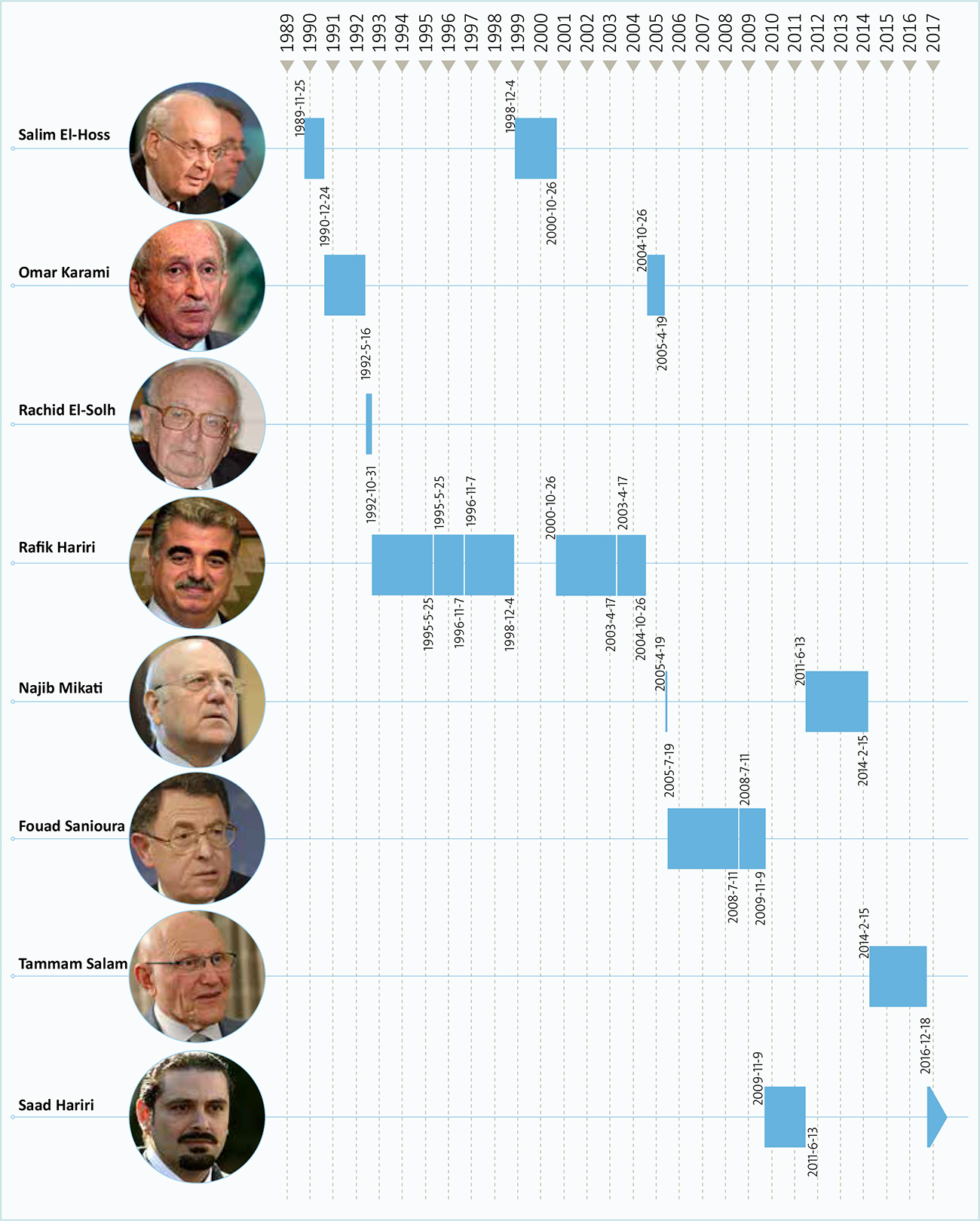
Post-Taëf Lebanese Governments
Seventeen governments have been formed since Taëf Agreement, with eleven comprising 30 ministers each, three comprising 24 ministers each, two comprising 14 ministers each, and one comprising 16 ministers. However, it is noticeable that the five governments of Rafik Hariri, the two governments of Omar Karami, and the two governments of Saad Hariri had thirty ministers. Table No.1 below shows the PMs, size and dates of formation of the seventeen post-Taëf governments (1989-2016).
Table No. 1: The Seventeen Governments (1989- 2016) by PMs, Size, and Dates of Formation
Source: Government Formation Decrees
* Number of members of Lebanese Parliament is 128.
Table No.1 above shows the following:
- Salim El-Hoss’s first government gained the greatest confidence (Unanimity of MPS), whereas Omar Karami’s second government formed in 2004 had the lowest confidence (59 MPs).
- The formation of both Salim El-Hoss’s government in 1998 and Rafik Hariri’s government in 2003 was the fastest, taking only two days. However, the formation of Tammam Salam’s government took 315 days, the longest period so far in the history of Lebanon.
- The shortest period for preparing and reading out the ministerial statement before Parliament was only one day following the formation of Salim El-Hoss’s first government. The longest period was 33 days within the government of Tammam Salam. However, the legal deadline stipulated by the Constitution (Article 64) is 30 days.
- The longest-lasting government was that of Fouad Sanioura. It lasted from July 19, 2005 until July 7, 2009, that is about four years (despite the resignation of some ministers). However, the shortest-lasting government whose mandate ended after three years was that of Najib Mikati (It was formed in 2005 and oversaw the parliamentary elections).
Ministries and Monopolies:
Table No. 2 below shows that some ministries have gradually become confined to specific sects. For instance, the Ministry of Finance was previously distributed among many sects, with Shia'a and Sunni having the lion's share. However, it might become confined today to Shia'a only. The Ministry of Interior was distributed among Sunni, Maronite, and Greek Orthodox, but it might become restricted to Sunni. The same goes for the Ministry of Justice that might become restricted to Sunni, the Ministry of Defense to Greek Orthodox, the Ministry of the Displaced for Druze, and the Ministry of Telecommunications for Maronite. Ministries were distributed among sects as follows:
Table No. 2: Ministries and Sects
Source: Government Formation Decrees
- Ministry of Justice: Out of 17 ministers, 8 are Sunni.
- Ministry of National Defense: Out of 17 ministers, 9 are Greek Orthodox. The majority of ministers (11 out of 17) are Christians.
- Ministry of Foreign Affairs and Emigrants: Out of 17 ministers, 8 are Maronite.
- Ministry of Interior and Municipalities: Sunni, Maronite, and Greek Orthodox. No Shiite has ever served this ministry and the majority of ministers (11 out of 17) are Christians.
- Ministry of National Education and Fine Arts (Later, Ministry of Education and Higher Education): Out of 17 ministers, 9 are Sunni. The majority of ministers (11 out of 17) are Muslims.
- Ministry of Public Works and Transport: Sunni, Druze, and Shia’a. The majority of ministers (14 out of 17) are Muslims.
- Ministry of Energy and Water: Shia’a (6) and Maronite (7). No Sunni has ever served this ministry and the majority of ministers (11 out of 17) are Christians.
- Ministry of Telecommunications: Out of 17 ministers, 8 are Maronite. No Shiite has ever served this ministry and the majority of ministers (11 out of 17) are Christians.
- Ministry of Finance: Out of 17 ministers, 8 are Sunni. 13 out of 17 ministers are Muslims.
- Ministry of Public Health: Shia’a and Druze. The majority of ministers (11 out of 17) are Muslims.
- Ministry of Labor: Shia’a and Greek Orthodox.
- Ministry of Tourism: Out of 17 ministers, 6 are Maronite. The majority of ministers (14 out of 17) are Christians.
- Ministry of Agriculture: Out of 17 ministers, 10 are Shia’a. The majority of ministers (11 out 17) are Muslims.
- Ministry of Industry and Oil: All sects.
- Ministry of Economy and Trade: All sects.
- Ministry of Environment: All sects except Shia’a.
- Ministry of the Displaced: Druze (9/15). No Shiite has ever served this ministry.
- Ministry of Youths and Sports All sects except Maronite.
- To sum up:
- The Sunni sect had no representation in the Ministries of Energy and Water, Labor (except in the current government where it is represented by Minister Mohammad Kabbara), and Agriculture.
- The Shia’a sect had no representation in the Ministries of Justice, Interior and Municipalities, Telecommunications, Environment, and Displaced.
- The Druze sect had no representation in several ministries, namely the Ministries of Defense, Finance, and Interior and Municipalities, which had long been served by this sect.
- The Maronite sect had no representation in the ministries of Public Works and Transport (except in the current government where it is represented by Minister Youssef Finianos), and Youths and Sports
 .
. - The Greek Orthodox sect had no representation in the ministries of Foreign Affairs and Emigrants, Energy and Water, and Telecommunications.
- The Greek Catholic sect had no representation in several ministries, namely the Ministry of Foreign Affairs and Emigrants that had long been served by this sect.
Ministers and Parliamentary Representatives:
Half of the Ministers are MPs.
According to Article 208 of the Lebanese Constitution, a minister can be a Member of Parliament (MP). In some governments, the majority of ministers were MPs, which might limit the power of MPs to oversee governmental activities. For instance, the ministers that became MPs (hereinafter referred to as Ministers-MPs) in the sixth government headed by Rafik Hariri, were 22 representing about three quarters of ministers. The figure below shows the number of Ministers-MPs out of the total number of ministers; they represented about half of the seventeen post-Taëf governments’ ministers.
Sectarian Composition of the Government
Seventeen governments have been formed since the 1989 Taëf Agreement, with eleven (the majority) comprising 30 ministers each (including the Prime Minister), two comprising 14 each, three comprising 24 ministers each, and one comprising 16 ministers. Table No. 3).
No. 3).
- In the governments of thirty ministers, seats were distributed among sects as follows:
- Maronite, Sunni, and Shia’a: six seats each.
- Greek Orthodox: four seats.
- Druze and Greek Catholic: three seats each.
- Armenian Orthodox: two seats.
N.B.: Sometimes one seat is allocated for Armenian Orthodox and another for Evangelical or Christian Minorities such as Latin.
- In the governments of twenty four ministers, seats were distributed among sects as follows:
- Maronite, Sunni, and Shia’a: five seats each.
- Greek Orthodox: three seats.
- Druze and Greek Catholic: two seats each.
- Armenian Orthodox and Christian Minorities (Evangelical): one seat each.
- In the governments of fourteen ministers, seats were distributed among sects as follows:
- Maronite, Sunni, and Shia’a: three seats each.
- Greek Orthodox: two seats.
- Greek Catholic, Druze, and Armenian Orthodox: one seat each.
- In the government of sixteen ministers, seats were distributed among sects as follows:
- Maronite, Sunni, and Shia’a: three seats each.
- Greek Orthodox, Druze, and Greek Catholic: two seats each.
- Armenian Orthodox: one seat.
Table No. 3: Lebanese Governments' Composition
Source: Governments Formation Decrees
.jpg)
.jpg)
.jpg)
.jpg)
.jpg)
.jpg)
.jpg)
.jpg)
.jpg)
.jpg)
.jpg)
.jpg)
.jpg)
Notes
1- Pursuant to Decree No. 5608, dated September 2nd, 1994, Michel Murr served as the Minister of Interior after the dismissal of Minister Bechara Merhej who resigned later following his appointment as a Minister of State.
2- Samir Geagea resigned and was replaced by Roger Dib.
3- Vahé Barsoumian was appointed as the Minister of Social Affairs to replace Elias Hobeika who became the Minister of Water and Electricity Resources.
4- Pursuant to Decree No. 3602, dated June 17th, 1993, Georges Frem was dismissed and appointed as a Minister of State. Minister Elias Hobeika took his place in the Ministry of Electricity and Water Resources, and then was dismissed pursuant to Decree No. 3920, dated August 19th, 1993, when Minister Jean Obeid took his place.
5- Hagop Demirjian resigned on August 6th, 1998
6- Kabalan Issa El-Khoury resigned on October 24th, 1996.
7- After his death, Joseph Moghaizel was replaced by Pierre Pharaon pursuant to Decree No. 6905 of June 29th, 1995.
8- Five Shia’a ministers (Fawzi Salloukh, Mohammad Fneish, Talal El-Sahili, Trad Hamadeh, and Mohammad Jawad Khalife) , in addition to minister Yaacoub El-Sarraf (Greek Orthodox) who is close to Emile Lahoud, resigned on November 11, 2006 in protest of Special Tribunal for Lebanon. The resignation was rejected and the resigned ministers were not replaced.
9- Minister Ghassan Salameh resigned from the government upon his appointment. He was then replaced by Asaad Rizk pursuant to Decree No. 14325 of April 28th, 2005.
10- Minister Farid El-Khazen resigned and was replaced by Wadih El-Khazen pursuant to Decree No. 14192 of February 8th, 2005.
11- Minister of Labor, Charbel Nahas , resigned in 2012 and was replaced by Salim Jreissati.
12- Minister Talal Arslan resigned and was replaced by Marwan Kheireddine.
13- Abdallah Farhat, Ghazi Aridi, Marwan Hamadeh, and Fares Boueiz resigned in 2004.


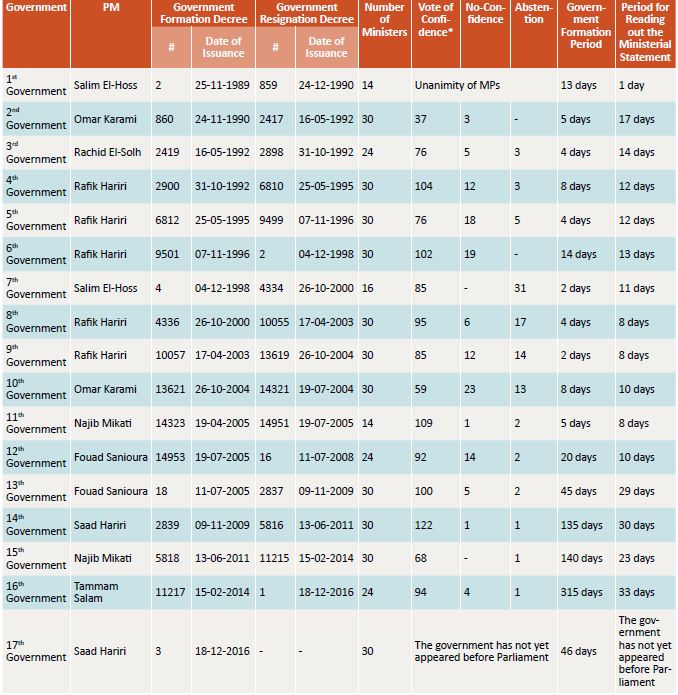
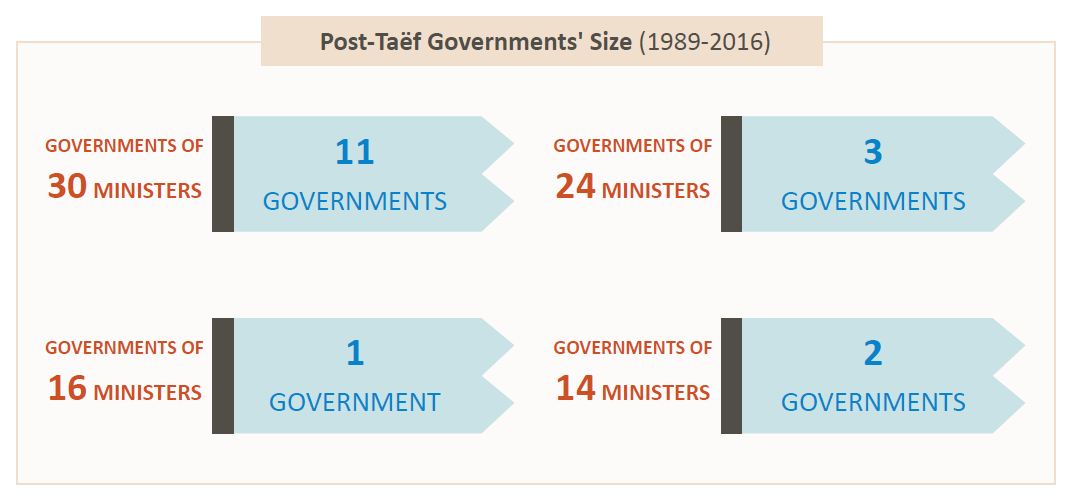
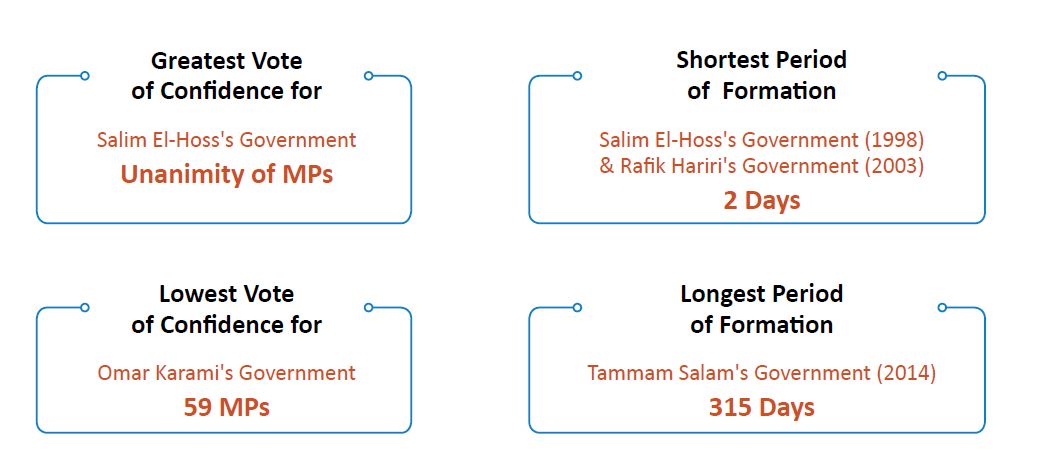
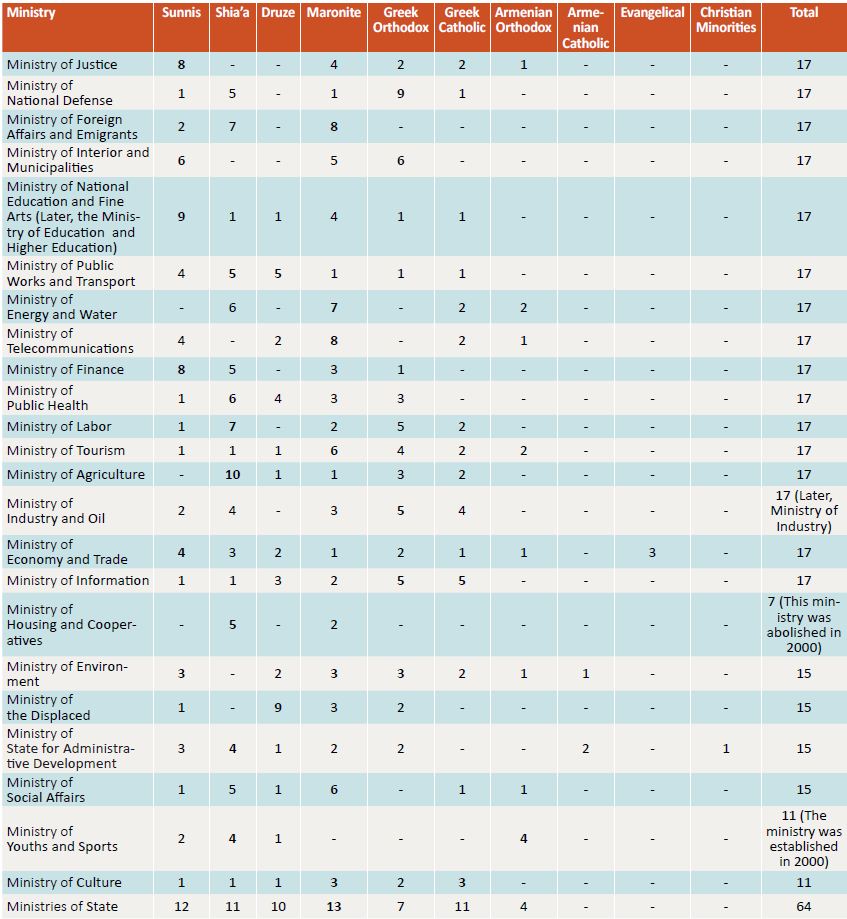
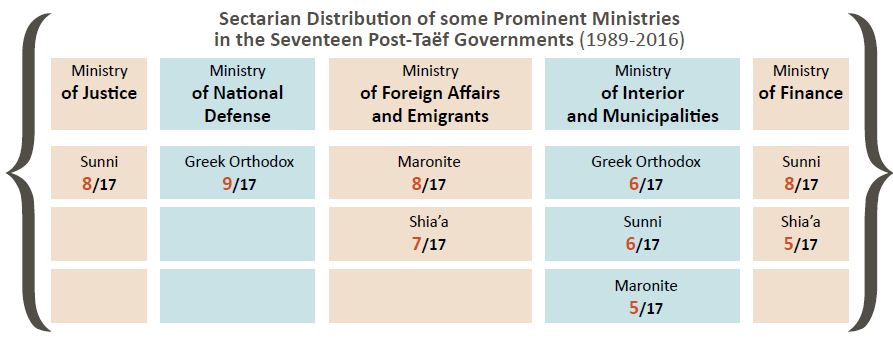

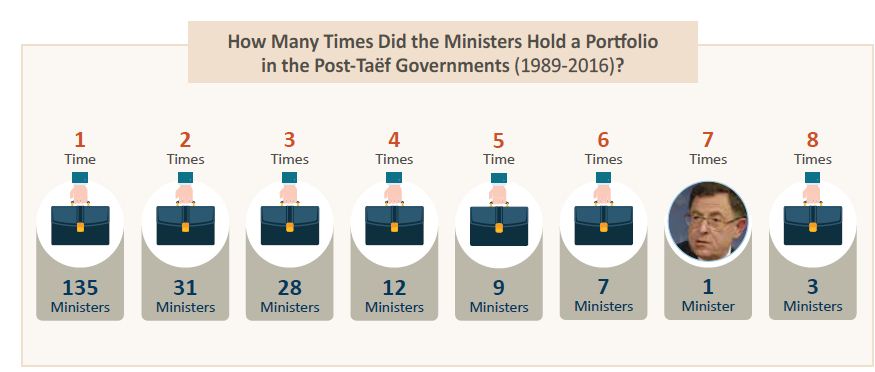
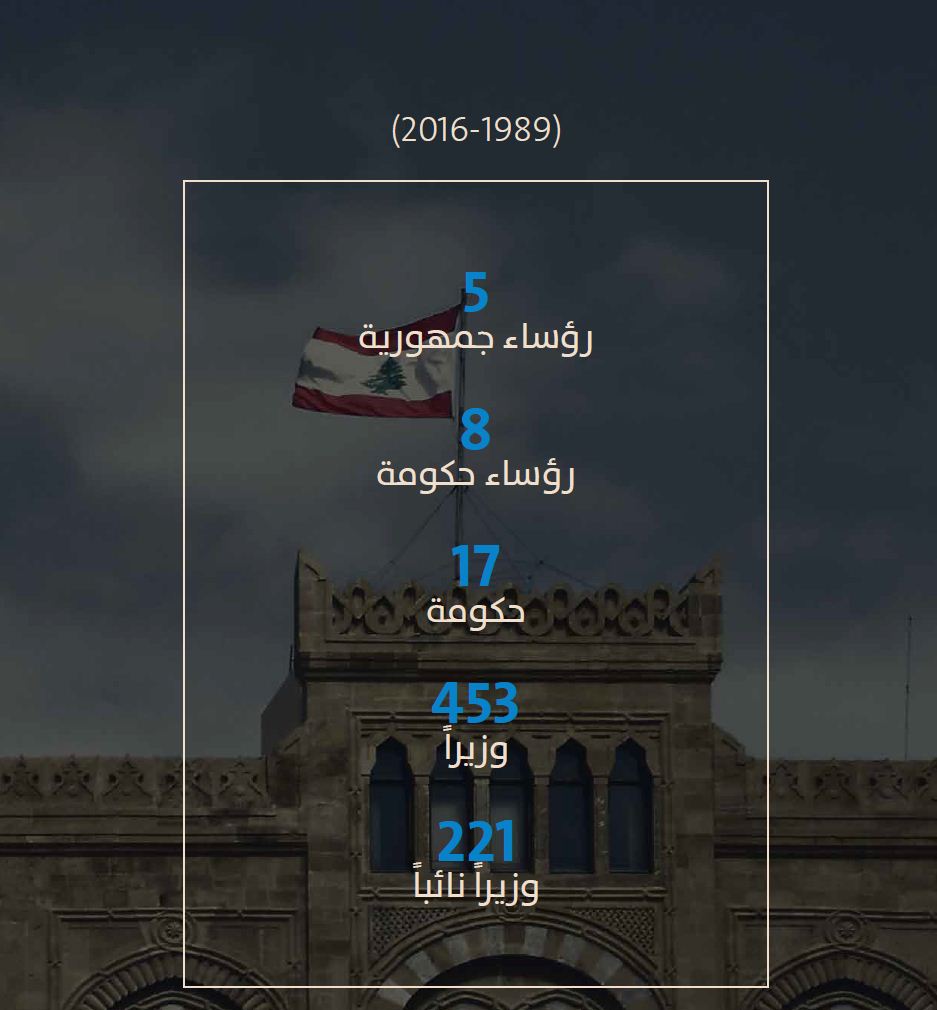






Leave A Comment